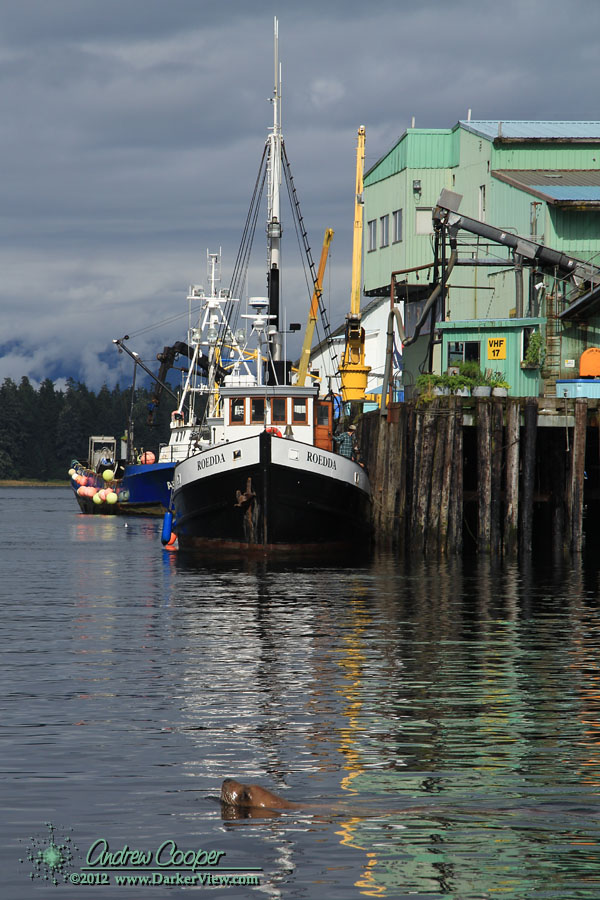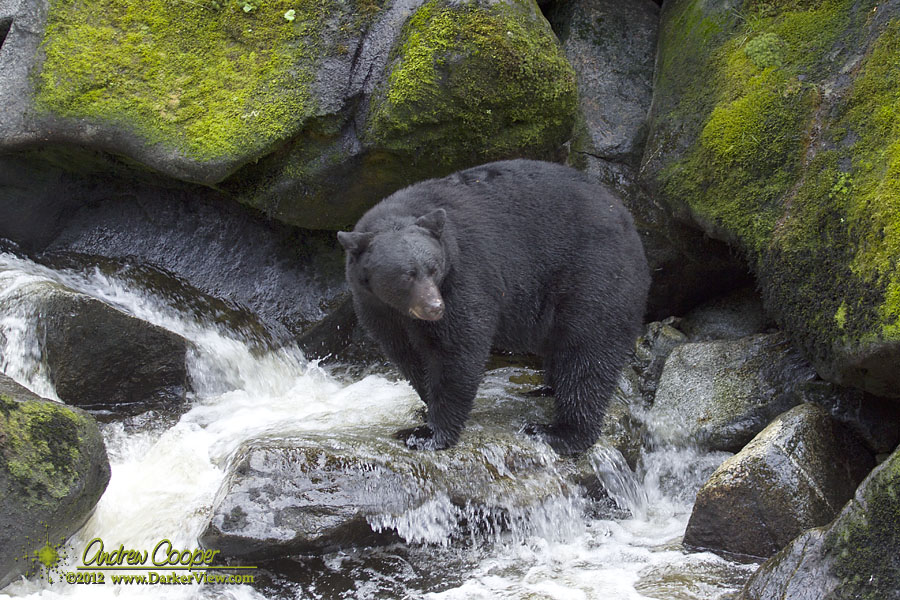
Category: Travel
Aurora Borealis
This trip to Alaska offered an opportunity that I had not experienced on previous trips due to the confluence of two conditions… I would be visiting later in the year than usual, it would actually get properly dark. When visiting Southeast Alaska in June and July the amount of darkness is dramatically limited by long summer days. The second condition is even less easily arranged… Our Sun is near the peak of its eleven year solar cycle. This results in more solar activity including large sunspots and energetic solar flares.
Put the two of these factors together and there is a good possibility of seeing the Aurora Borealis.
It is only a possibility, not a certainty by any measure… This was not a trip to the far north, where the auroral circle usual sits. If one were to travel north of Fairbanks into the true arctic one is almost guaranteed to see the aurora during solar max. I would be traveling between Juneau and Anacortes, from 58 to 48 degrees north latitude. At these latitudes it would take a strong geomagnetic storm to bring the aurora south into view. The chances of such a strong storm were relatively good, we are currently experiencing an active Sun near solar maximum, averaging a decent storm every month or two. In any case the odds were a bit better than seeing the aurora at home in Hawai’i.
At least there would be no light pollution to deal with, significant outposts of civilization are sparse along the route we would be traveling. One complication would be weather… Of the twenty days I would spend in northerly latitudes, about half were clouded over, thus the odds of seeing a good auroral display were modest, maybe even unlikely.
We got lucky.
Inside Passage
It took 3 hours to fly to Juneau, it took 18 days to get back.
The video is done. Shot with a Canon 60D, a Canon G11 and an iPad, the video documents the voyage from Juneau to Anacortes I took last month. Bears, whales, dolphins, and a whole lot of water. It was a great trip, I can only hope I convey a little of the experience in the video.
Compressing 1,800+ photos and dozens of video clips to three minutes is an interesting exercise. This is compounded by the thousands of timelapse exposures that needed to be assembled. It went surprisingly quickly this time, a mere three evenings of work. (As long as you classify evening as getting to bed before 2am.) Either I am getting better with the tools, or I just got lucky when it came to fitting the thing together.
I have produced several videos about these voyages by boat through the wilds of the Pacific Northwest. How do you keep each video from looking just like the last? This time I changed it up stylistically, opting for a much more driving soundtrack coupled with the frenetic pace of timelapse.
Does it work? I will await your judgement.
Inside Passage from Andrew Cooper on Vimeo.
Using the Nifty Fifty
Some photo instructors advocate using only a fifty millimeter fixed focal length lens as a creative exercise. A nice idea for an exercise, but I really did not want to do this while on an extended trip along the Alaskan and British Columbia coast by boat.

Looking to pack light I had taken only three lenses to accompany the Canon 60D that would travel with me. This set included a Canon EF-S 17-85mm f/4-5.6 IS USM Lens, a 70-200mm f/4 L series telephoto, and a 50mm f/1.8. The 50mm was almost left behind, I grabbed it on a whim while packing realizing that it took up very little room.
It was a few days into the trip when trouble appeared. I began to get occasional errors when using the 17-85mm, the camera complaining about a lens communication error. After a day this became a serious issue, the camera refusing to take photos with the lens. The other lenses worked fine, thus I was sure the trouble was in the lens, not the camera.

A couple more days and even that solution failed, the lens just jammed up entirely, with the aperture stop about halfway closed.
I was down to the the telephoto and the 50mm… Time to get creative.
The 50mm lens is interesting. It is small. It feels like you have forgotten to put a lens on the camera. It is sharp! The lens may be the cheapest lens Canon sells, just over $100, but there is nothing to complain about in the performance, crisp and sharp photos from corner to corner. It is fast. The very fast f/1.8 ratio allows for photos in low light conditions as well as providing a wonderfully shallow depth of field when you want it.
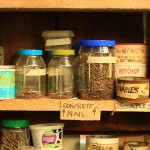
I did have my little Canon G11 along, giving me some capability with a zoom lens. But I really wanted to shoot with the DSLR and the higher photo quality offered by the big lens and larger sensor when the photo really mattered.
On an APS-C camera like the Canon 60D there is a 60% crop factor, converting a 50mm to a mild telephoto. With a fixed focus I had to control the field through positioning myself instead of adjusting the camera. I do wonder if I got better shots as I had to become more involved and plan the shot?
I did take some great shots with the 50mm. Going through the 1,800+ photographs from the cruise I am quite happy with a number of them. An unintentional creative exercise, but a successful one.
Roedda
Carnival
This was no run down operation, hanging on to faded glory. The rides and buildings were all in good repair, all of the bulbs lit, with fresh paint and empty trash bins. Even on a weekday night there were lines at many rides, screams and cheers echoing through the night air.

Stars over the Nickel
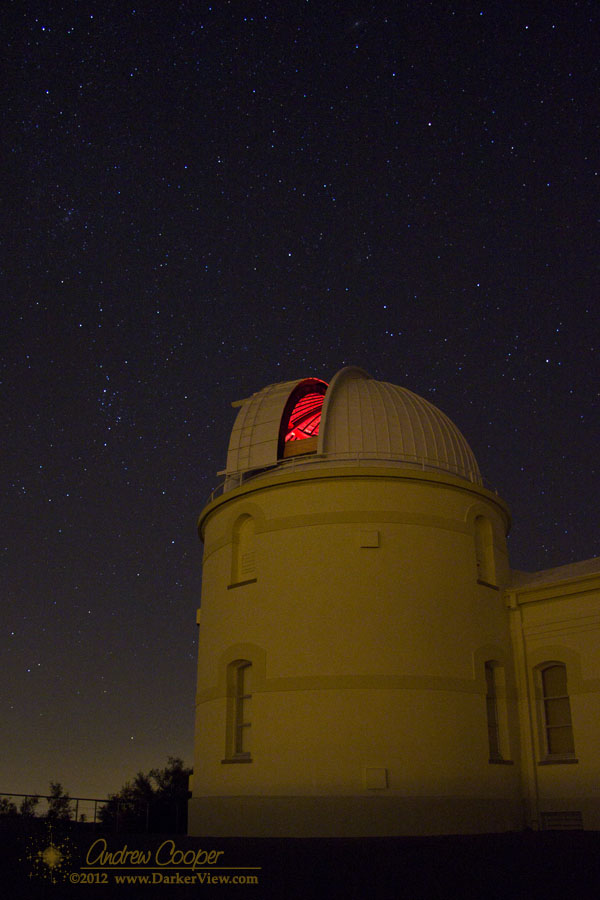
Considering Another World
This small boat is no cruise ship, there is no insulation from the world we travel. We shop for supplies in the same stores as local folks, use the same harbors, tie up for the night next to the working boats. We are provided a view into a different world and the lives of people who live there.

I chat with a lady working on a gill net strung along the dock, performing the age old fisherman’s ritual of mending the net and lines. I see another life, of fish and water, where regulations and luck determine the results of the fishing season, whether the bills get paid and if the boat gets fixed.
I meet folks who have lived in remote communities much of their lives, places where they would like to spend the remainder of their days if economics and luck permits. A struggle made more precarious when a cannery closes, or a soft economy allows fewer sportsman to come fish local waters and spend money earned in the cities far to the south.
I see a fishing community remaking itself to provide a place interesting enough that the cruise ships will stop for a day. Floating cities with thousands of people and thousands of wallets full of dollars that can provide a better life for local residents. That money could create a future here for children that may not have to leave and seek a living elsewhere. There is a once closed cannery complex remodeled into a large visitor center, dozens of boats in the harbor for charter fisherman, whale watching excursions and eco-tours.
I spend a moment talking with a young woman, who has bet on the local economy and started a small cafe. Behind me are tables full of cruise ship passengers, watching eagles and ravens squabble overhead as they munch on salmon tacos. The character of the town has changed, will continue to change. I see that there will be both good and unfortunate aspects of what is happening. I wonder what I will find when or if I visit again in a few years.
Traveling the world with open eyes gives one a perspective into other lives. So often when I meet someone who displays intolerance or even bigotry towards other nationalities, I find they have never traveled or seen much of the world. Experiencing the world is an important part of any life. To travel, to see, to consider what it means to live somewhere else.
Crossing Paths with a Humpback
Any sort of water activities, fishing or scuba diving, off the Kohala coast in winter involves a chance of seeing a whale. Indeed, Kohala is not just the part of the island we call home, it is the Hawaiian word for whale. In winter the whales are here in large numbers… Boat or drive north of Kawaihae and the odds approach certainty that you will see not just a few, but a lot of Humpback Whales as they cruise the waters along this sheltered coastline. Rental cars are parked along the coastal highway wherever a pod can be seen. Just getting to a dive site can involve navigating around a pod or two as blows and fins are seen in all directions. Dive beneath the water and you can listen to the songs of the whales echoing eerily through the blue.
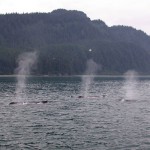
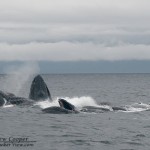
In past journeys to Alaska I have had many opportunities to watch these majestic animals. We regularly stop and watch when we get the chance, drifting while whales feed around us. Hopefully this results in good photos to enjoy and post on the blog. At the end of the trip I fly back to Hawai’i to resume my usual life. But when winter comes the Humpbacks will follow, returning to the warm tropical waters around the islands to mate and give birth to the next generation. I look forward to seeing them off the Kohala Coast and listening to their songs while diving in those warm waters.
What are the odds of encountering the same whale at both ends of this journey? I wonder.
Postcard from Alaska – Trolling
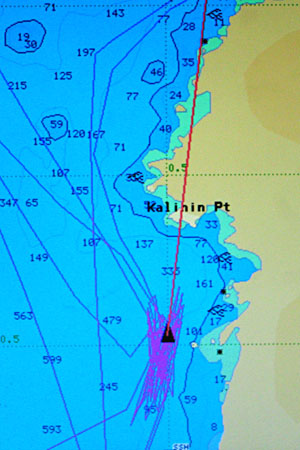
Sometimes the order of the day is fishing, fishing and more fishing. No problem, Deb loves fishing! Go have fun dear, enjoy some more fishing. I’ll just sit up here and drive.
Drive back and forth across the same spot over and over again, as slow as the boat will go. So slow the vessel barely answers the helm, taking her own sweet time to turn. It is a peaceful job of driving, as long as the little charter boats stay out of my way. I am driving a boat five times their size that just keeps moving with minimal regard to whatever I do to the wheel.
I just sit back watch the bald eagles, a humpback whale threading through the swarm of charter boats, and watch the log on the GPS display slowly fill in with the record of repeated passes…

